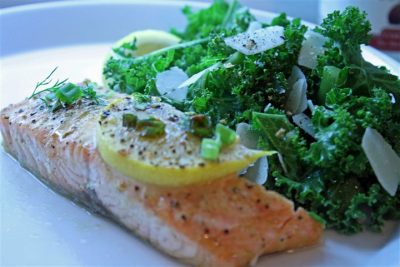 You have replaced refined grains with whole grains, increased nuts, fruits and vegetables, are drinking more water and even began taking a probiotic supplement to support your digestive health. Yet, despite these healthy habits, you’re still not feeling your best and you don’t understand why.
You have replaced refined grains with whole grains, increased nuts, fruits and vegetables, are drinking more water and even began taking a probiotic supplement to support your digestive health. Yet, despite these healthy habits, you’re still not feeling your best and you don’t understand why.
If you often experience digestive discomfort, it may be helpful to learn about FODMAPs, which stands for Fermentable Oligosaccharides, Disaccharides, Monosaccharides And Polyols. Researchers at Monash University in Australia coined the FODMAP acronym in 2005 to classify specific types of short-chain carbohydrates that can be poorly absorbed in the small intestine resulting in symptoms including abdominal pain, bloating, gas, constipation and/or diarrhea.
FODMAPs can be found in ordinarily healthy foods, such as wheat bread, beans, yogurt, milk, apples, onions, garlic, cashews, mushrooms, honey and many more. FODMAPs can also be found in less obvious places such as probiotic supplements, which people often take to support digestive health.
Who should be concerned about FODMAPs? FODMAPs can trigger digestive discomfort in people with digestive sensitivities, including those with Irritable Bowel Syndrome (IBS). The International Foundation for Functional Gastrointestinal Disorders estimates that 10-15 percent of Americans are affected by IBS, and for many, the cause of their digestive discomfort many go undiagnosed.
What is a low FODMAP Diet? The plan begins with a two to six week trial elimination phase where foods high in FODMAPs are removed from the diet, to reduce effects of FODMAPs on the gut (e.g., stretching caused by water and gas) that can lead to pain, bloating, and cramping, and help establish the least symptoms possible. A registered dietitian nutritionist (RDN) trained in the low FODMAP diet provides guidance on the reintroduction of FODMAPs, in a step-wise process, to distinguish individual FODMAP triggers and tolerances. From there, the RDN prepares a customized, well-balanced eating plan to restrict your FODMAP triggers while minimizing food eliminations and maximizing nutritional value.
According to RDN and FODMAP expert Kate Scarlata, “Once I work with a patient with IBS to identify and eliminate their FODMAP triggers, they report feeling like a whole new person. Planning ahead, like keeping low FODMAP grocery lists on hand and identifying favorite low FODMAP recipes and snacks, is the key to living comfortably to keep your symptoms at bay.”
Clinical evidence supports a low FODMAP diet approach as first-line therapy for people with IBS. In a 2014 study of people with IBS published in the journal Gastroenterology, 70 percent of participants had a reduction in gastrointestinal symptoms including abdominal pain, bloating, gas, constipation and/or diarrhea, while following a low FODMAP diet compared to those who followed a regular diet.
Nestle Health Science has developed a unique, comprehensive online resource – www.LowFODMAPcentral.com – for people who would like to learn more about FODMAPs and a low FODMAP diet. It is important to work with your doctor and a FODMAP knowledgeable RDN to determine if a low FODMAP diet is right for you.

